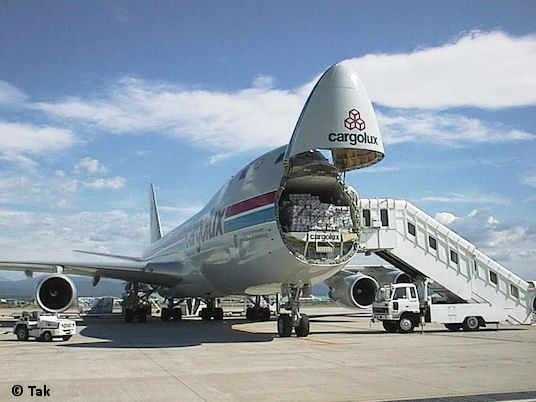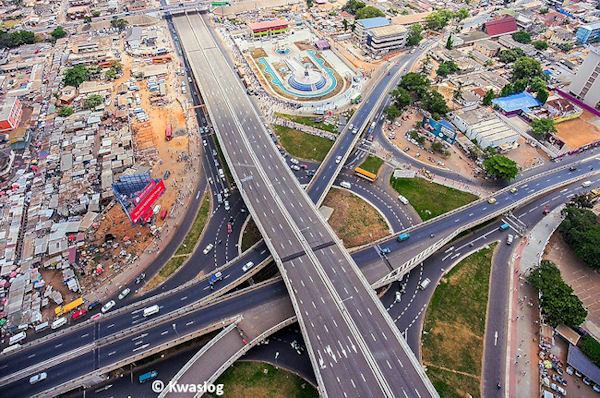It is not only granny bicycles that have been transported a long way before they reach the shop and they contain parts from many countries. The same applies to cars, clothes, shoes, hockey sticks and countless other things. Why are manufacturers so complicated? Isn't it more convenient to make an item all in one place?
In the 19th century and the first half of the 20th century, transport was expensive and not available everywhere. It was indeed more convenient to concentrate production in one factory. It was also more convenient to locate the factory close to the raw materials and the labour force.

Freight transport by air: fast and not too expensive
You need coal and iron ore to make steel. The Ruhrgebiet was a suitable place to make steel, because the soil of this area contained a lot of coal and not far from there was a lot of iron ore. From around 1850 onwards, many steel mills were built in the Ruhrgebiet.
In the second half of the 20th century, transport became better, faster and cheaper. This was partly due to the invention of the container. This invention made the loading and unloading of goods a lot easier. The infrastructure, too, improved greatly through the construction of good seaports, airports, road and rail connections. This happened not only in rich countries, but also in less wealthy ones like China and Nigeria.

That cheap and good transport makes it possible for companies to find the cheapest raw materials, sources of energy, components and so on. And if products have to be transported over long distances, that is no problem, because the cost of transport is small compared to other costs.
The fact that transport was cheap and widely available had another consequence. Labour-intensive production is cheapest in countries where wages are low. As a result, a great deal of manufacturing industry has been adrift and has moved to these low-wage countries. When wages rise there in the course of time, manufacturers look for new locations. In most cases, this involves unskilled or semi-skilled labour.
Production processes that require little labour generally remain in the producer's home country. Examples are work that can be done by robots and machines, or creative work such as inventing and designing new products. This has led to an international division of labour where manual work is mainly done in low-wage countries and the remaining work in rich countries.
Questions
4) What is a multinational corporation?
5) Why do multinational companies in particular spread their production process around the world?
6) Of Japanese companies that make computers, only the head office with the research department is located in Japan. Why is that?
